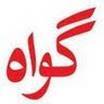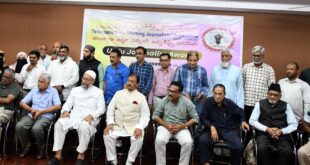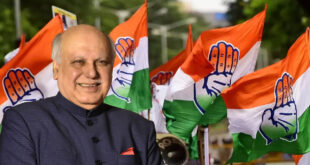By: Asad Mirza
US President Donald Trump became the seventh American president to visit India, with his maiden two-day visit on 24 February 2020.
The government which has become habitual of spending big bucks on irrelevant but optics high events, spent more than an estimated 250 crore rupees on the visit, which does not include the cost of dresses, for you know who, who strutted along with the presidential couple in expensive and new dresses for every occasion.
The visit right from the time of its announcement was not supposed to be a net gainer for either the US or India. As it was supposed to be a return gift for Modi’s rally in Houston in September last.
Analysts, however, point to a long list of issues, which could have been resolved between the two countries. But the biggest disappointment of the visit was the absence of US Trade Representative Robert Lighthizer from the high-powered delegation, which accompanied Trump. His absence was indication enough that no Trade Deal will be signed between the two countries, for which the Indian diplomats have been working very hard for the last couple of years.
Indo-US Relations
The Indo-US relations haven’t remained honky-dory always. They took a nosedive in 1968, when India refused to sign the Nuclear Non-Proliferation Treaty (NPT), accusing the US, the Soviet Union and the UK of ‘atomic collusion’. They further went awry in 1974, when India successfully carried its first underground nuclear test at Pokhran. Though Jimmy Carter visited India in 1978, the ties remained cold. It was only after Indira Gandhi met with Ronald Reagan in 1982 that the process of normalisation started. Two years later, Vice President George H.W. Bush visited New Delhi. In the years to follow, economic and strategic relations between the two nations improved. But that changed once again in 1998. Once again, India’s nuclear ambitions came at the cost of its ties with the United States. It was Clinton who kick-started ties again in 2000 with a trip to India, the first by a US president in more than 20 years. His trip was hailed a success in thawing relations, and set the scene for the next US President, George W. Bush, to lift sanctions imposed after the 1998 test. The nuclear issue was effectively set-aside in 2005, when Bush and Manmohan Singh signed the Civil Nuclear Cooperation Initiative, a framework that lifted a three-decade US moratorium on nuclear energy trade with India.
Under the agreement, India agreed to separate its civil and military nuclear facilities. In exchange, the United States agreed to work towards full civil nuclear cooperation with India.
Current level of Indo-US ties
By the end of 2019, India was expected to have procured $18 billion worth of defence items from the United States, according to India’s Ministry of External Affairs. India and the US now conduct more bilateral military exercises with each other than with any other country, the ministry said. The United States is also India’s largest trading partner in goods and services combined with overall bilateral trade at $142 billion in 2018. In 2020, India expects that figure to exceed $150 billion.
In reality what the US was trying to gain from this visit was access to the Indian Big Data, to be used by US companies in activities such as artificial intelligence (AI), robotics, Internet of Things (IoT), cloud computing, data analytics, and nanotechnology. In addition the US government wanted easy access for its dairy and agriculture products to 1.3 billion Indian consumers. And further pressurising India to halt measures to make healthcare affordable.
The Indians from their side wanted more relaxed visa norms for technocrats seeking employment in the US, in addition to increasing cooperation in other areas such as defence, energy, apart from US farm exports to India. India’s energy imports from the U.S. would reach $10 billion this year. In addition to more US FDI into India.
A trade deal with India has been a priority for two years for Mr Trump, who would have liked another economic agreement to take onto the campaign trail at the next US presidential elections in November, this year. Besides targeting 1.7 million Indian origin voters in the US. But the two sides have been divided over farm products, medical devices, digital trade and new tariffs.
However, at the joint press conference at the end of the visit, President Trump indicated some progress toward what he hoped will be a landmark trade agreement between the two economic giants. But, as expected there was no breakthrough to be announced. He further announced a $3 billion arms purchase and a letter of cooperation between Exxon Mobil and India’s energy sector. They agreed to create a joint counter-narcotics working group to reduce opioid abuse
The joint statement of the visit talks about a new Free Trade Agreement (FTA), and Trump’s appreciation of Modi’s stand on Pakistan and CAA and personal praise for Modi.
While a US administration official had told reporters before Trump left Washington that the president would raise issues of religious freedom, Trump made no mention in his comments about a wave of policies that have stirred sectarian divisions in India. And instead in Delhi said ‘individual cases’ are up to India, when asked about the on going Delhi violence, thus dashing hopes of the minorities and anti-CAA protestors that India may get a wrap on the knuckles by the most powerful person in the world. He also preferred to keep away from the Kashmir issue, thus giving a big relief to MEA mandarins.
All in all, the visit was a big one on optics and flowery language, but it fell short on real delivery, not just for the masses but also for the two leaders themselves.
Asad Mirza
Asad Mirza is a Sr journalist based in New Delhi.
In his career spanning more than 20 years, he was also associated with BBC Urdu Service and Khaleej Times of Dubai.
He writes on Muslims, educational and international affairs issues.
Email: asad.mirza.nd@gmail.com
 Gawah (The Witness) – Hyderabad India Fearless By Birth, Pristine by Choice – First National Urdu Weekly From South India – Latest News, Breaking News, Special Stories, Interviews, Islamic, World, India, National News
Gawah (The Witness) – Hyderabad India Fearless By Birth, Pristine by Choice – First National Urdu Weekly From South India – Latest News, Breaking News, Special Stories, Interviews, Islamic, World, India, National News



